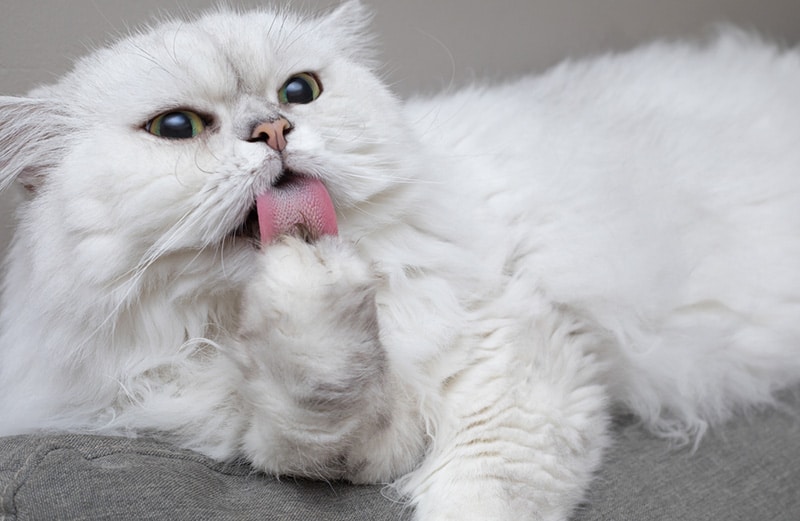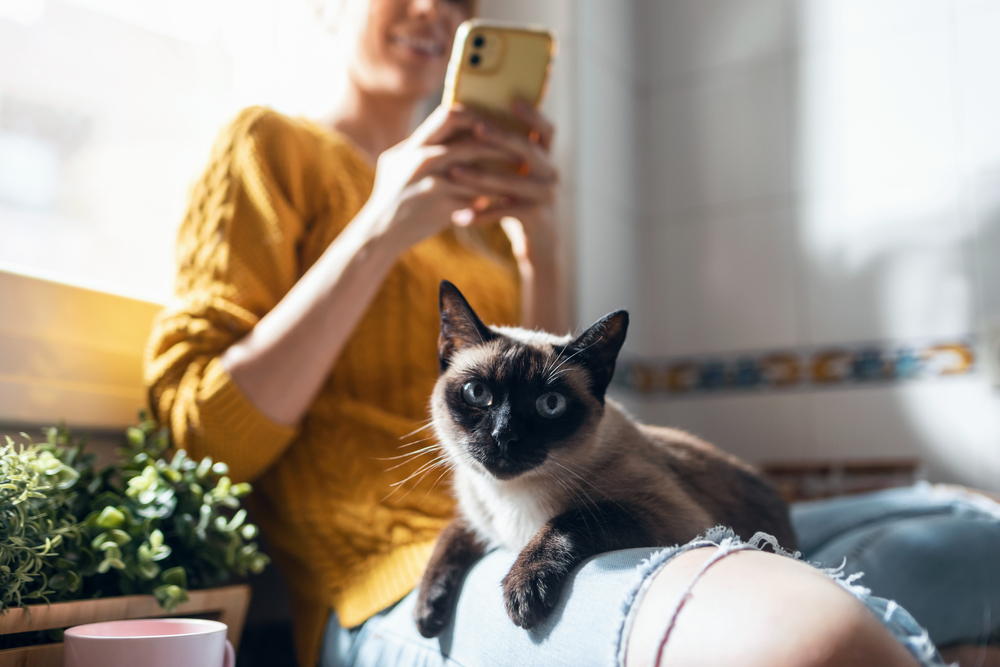Click to Skip Ahead
If you notice that your cat is grooming themselves excessively or if you’re asking yourself, “Why does my cat pull out his fur?”, know that it’s likely a form of what’s referred to as “fur mowing.” This is when it looks like your cat has been “mowing” their fur like it’s a lawn, often leaving bald spots and rows of thinned hair behind.
What is the cause of “fur mowing,” and what are the signs? Is there any way to treat it in felines? Is it dangerous? We answer these questions and more here, so read on!

The Technical Term for “Fur Mowing”
“Fur mowing” is used by cat owners and veterinarians alike because it does a good job of describing the condition, and it’s easier to say than the technical term, which is psychogenic alopecia. It’s also referred to as overgrooming and self-trauma.
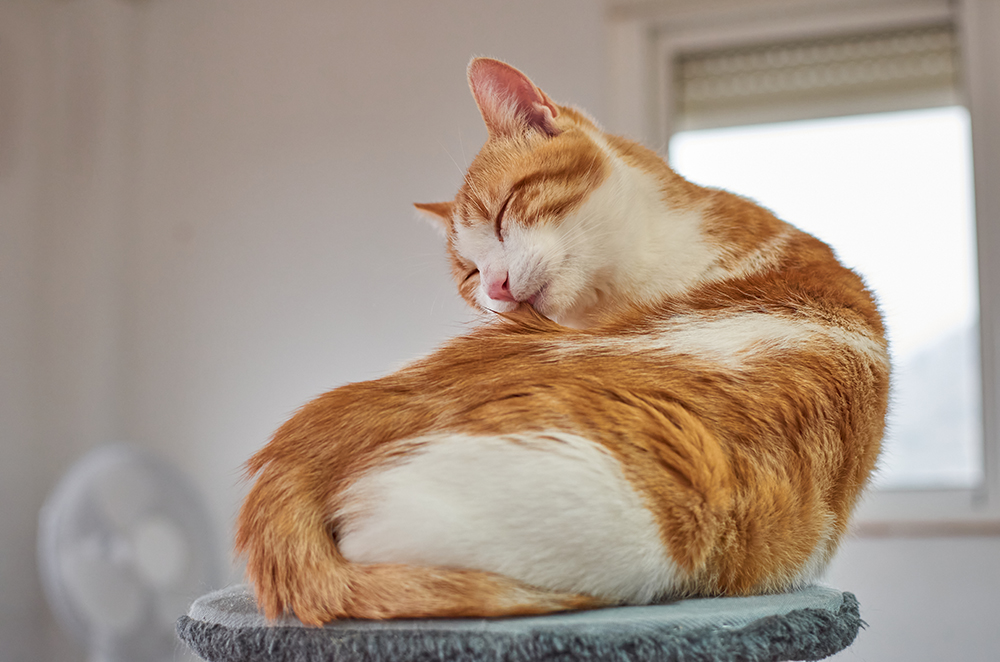
What Is “Fur Mowing” and What Are the Signs of It?
“Fur mowing,” or psychogenic alopecia, is the act of excessive grooming and hair pulling. The condition is thought to be due to a negative mental and/or emotional state. It tends to result in a thin and uneven coat and bald spots that develop from the hair pulling. At first, psychogenic alopecia in cats may look like skin irritation and itching. It then develops into excessive licking and hair-pulling.
The most common body areas affected by “fur mowing” are the sides or flanks. The back, butt, and legs may also be affected. Many owners do not notice that their cats are overgrooming because the behavior typically happens during the night when everyone is asleep or during the day when everyone is away at school and work.
What Are the Causes of “Fur Mowing”?
Psychogenic alopecia is not a fatal condition, though it should still be treated. That said, you may not know what could be causing it. The root cause is usually thought to be emotional or mental.
- Stress from significant life changes
- Introduction of a new household pet
- Poor husbandry (e.g. dirty litter box)
- Neighborhood cats getting too close to the windows
- Feeling threatened within the household
- Dealing with an underlying illness and/or discomfort
Keep in mind that signs of hair loss and overgrooming does not always correlate to psychogenic alopecia. Excessive licking, scratching, and hair pulling can be due to other issues.
- Flea infestation
- Ticks
- Skin allergies
The only way to know for sure what is causing your cat’s excessive grooming is to schedule a checkup with your veterinarian and rule out medical causes. They should be able to determine the cause through physical exams and tests if necessary. It’s a good idea to observe your cat and document their behaviors and grooming habits for a few days before the vet appointment.
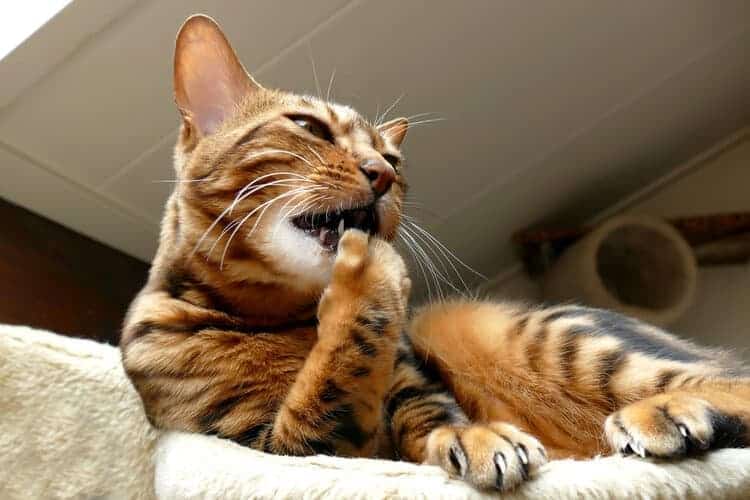
The 3 Facts to Keep in Mind
1. These Breeds Are Susceptible to Psychogenic Alopecia
Oriental breeds like the Siamese seem to be more commonly predisposed to psychogenic alopecia, or “fur mowing,” than other breeds.
2. Multi-cat Households Are More Commonly Affected
Experts have documented that the problem of “fur mowing” is more common in multi-cat households with indoor-only cats. This is likely due to the stress of sharing resources and sometimes, the inability to get along.
3. Anxiety Is Usually a Factor
Cats that are clinically examined tend to show extreme anxiety, which is likely a contributing factor to the “fur mowing,” or psychogenic alopecia, that has developed.
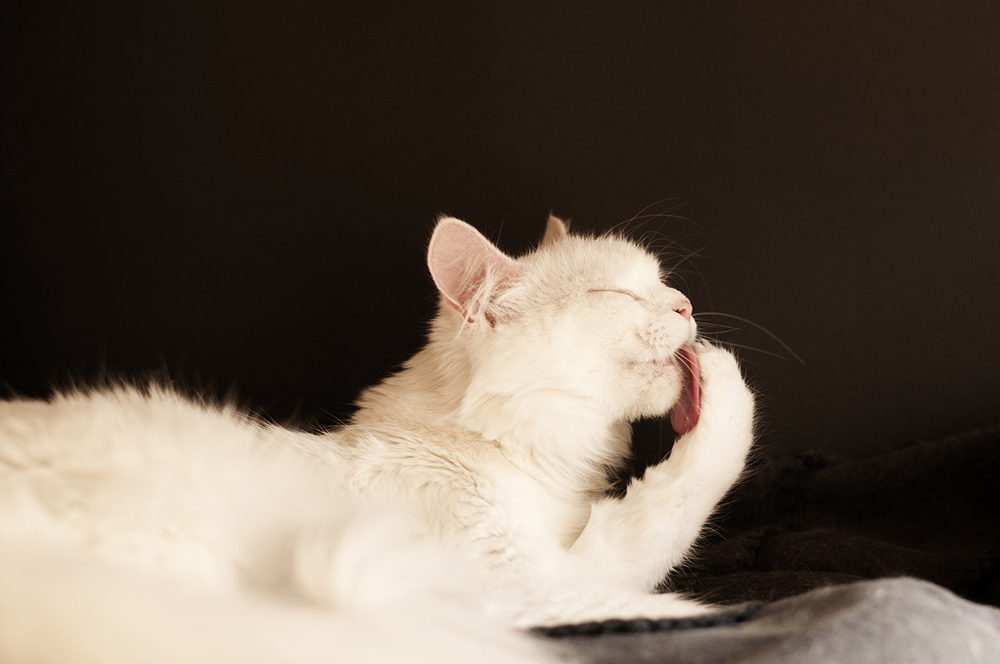
The Bottom Line
“Fur mowing” is often used to describe the act of overgrooming due to psychogenic causes. However, hair loss can be a sign of psychogenic alopecia, or it can be due to a problem like allergies or a flea infestation. Consult with your veterinarian if you notice your cat overgrooming themselves before signs of hair thinning and bald patches develop.
Featured Image Credit: catinsyrup, Shutterstock

